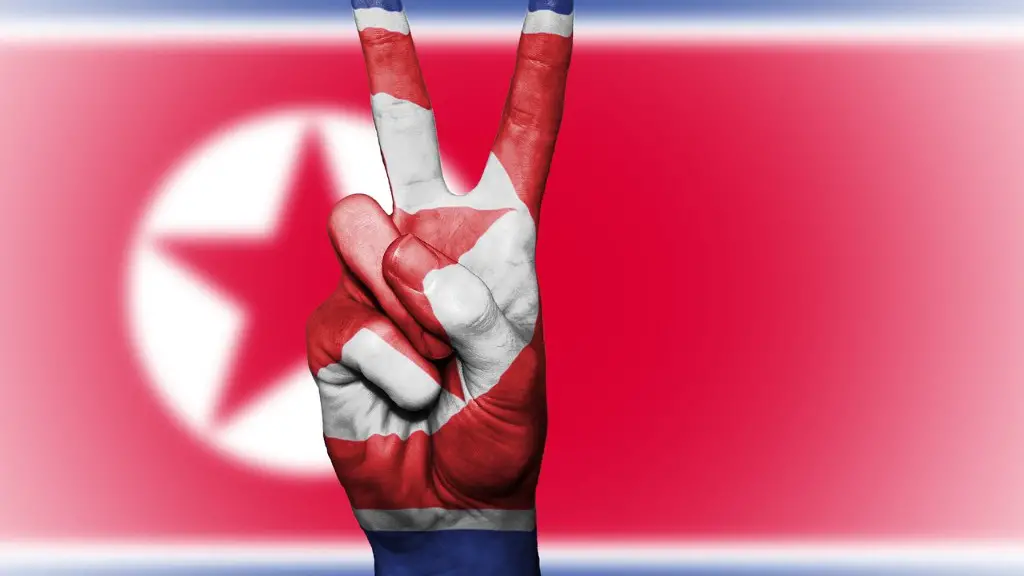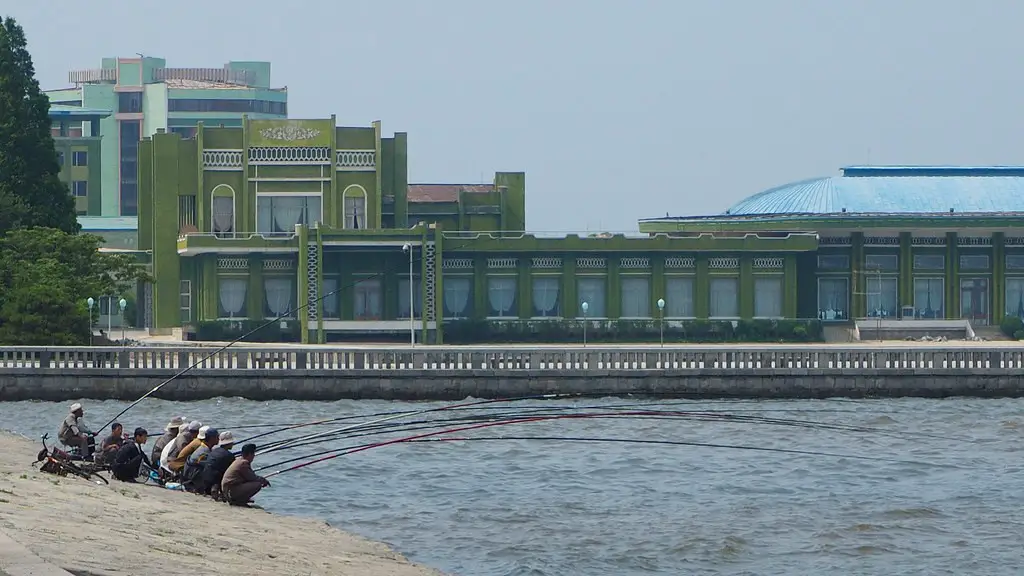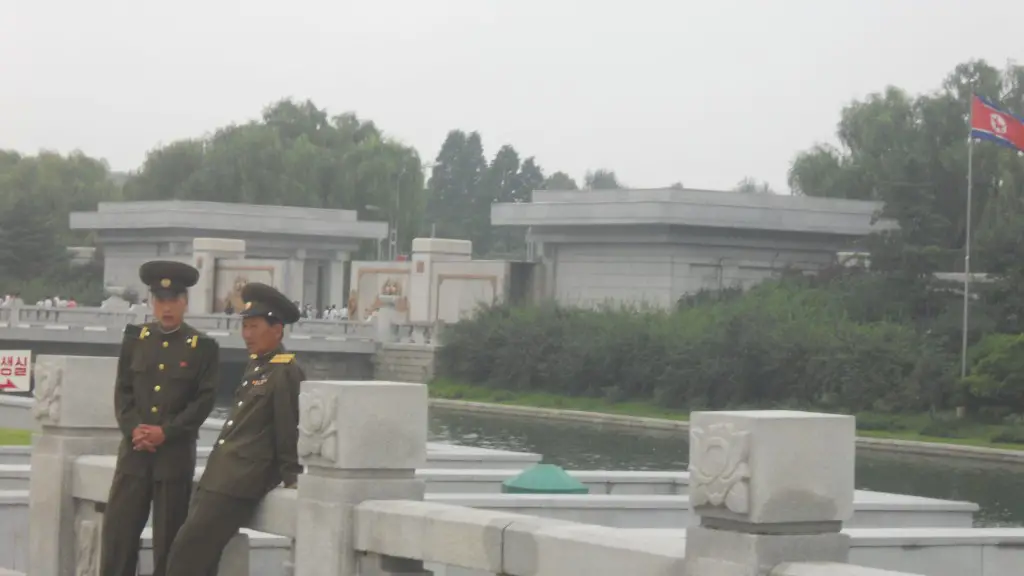In recent years, North Korea has made headlines for its nuclear and missile tests. The hermit kingdom’s nuclear program is a source of great concern for the international community, given its history of aggression and instability. In recent months, North Korea has ramped up its missile tests, launching a number of missiles into the Sea of Japan. This has led to increased tensions in the region, and has many people wondering why North Korea is launching missiles.
There are a number of possible explanations for North Korea’s behavior. One theory is that the country is trying to blackmail the international community into giving it economic assistance. Another possibility is that North Korea is trying to show off its military capabilities in an effort to intimidate its neighbors. It is also possible that North Korea is simply trying to keep its nuclear and missile programs active, in case they are ever needed for a future conflict.
Whatever the reason, North Korea’s missile tests are a cause for concern. The country’s unpredictable behavior could lead to a dangerous escalation of tensions in the region.
At present, the motivations behind North Korea’s missile launches are not definitively known. However, some reasons that have been proposed include the country’s desire todisplay its military might, to gain leverage in negotiations with the United States, and to counter what it perceives as threats from the US and its allies. Additionally, it is possible that North Korea is using its missile program to test new technology and to gather data that could be used to improve its military capabilities in the future.
Could North Korea hit the US with a missile?
The Hwasong-14 is a North Korean ballistic missile that is capable of reaching ranges of up to 8,000km. This puts the US island of Guam within range of the missile, as well as the possibility of reaching New York.
North Korea test-fired a pair of ballistic missiles on Sunday, with a potential range of striking Japan. This is a possible protest of Tokyo’s adoption of a new security strategy to push for more offensive footing against North Korea and China.
Is North Korea still launching missiles
In 2020, North Korea conducted four missile tests. In 2021, it doubled that number. In 2022, the isolated nation fired more missiles than any other year on record, at one point launching 23 missiles in a single day. North Korea’s aggressive missile testing program is a clear sign that the country is not interested in denuclearization, despite years of negotiations with the United States. The international community must take action to stop North Korea’s proliferation of weapons of mass destruction.
The potential for a nuclear test by North Korea is concerning given the tensions between the two countries. It is possible that the nuclear test is simply a show of force by North Korea, but it could also be indicative of an intention to develop a more robust nuclear arsenal. Either way, it is important to monitor the situation closely and be prepared for any potential escalation.
Where would a nuclear bomb hit in the US?
If a nuclear attack were to happen in the United States, the six most likely target cities would be New York, Chicago, Houston, Los Angeles, San Francisco, and Washington, DC. These countries will stay prepared to combat any type of nuclear attack shortly. The nuclear impact could destroy the city and this will lead to a disaster.
nuclear icbms are not easy to shoot down. If such anti-ballistic missiles were to hit a nuclear weapon, the explosion would be so great that it would cause widespread destruction.
Who gave North Korea nuclear weapons?
It is alleged that Pakistan’s former Prime Minister Benazir Bhutto supplied key data on uranium enrichment and missile technology to North Korea in exchange for information on nuclear weapons around 1990-1996. If true, this would be a major breach of international law and could have serious consequences for Pakistan’s relations with the international community.
North Korea’s long-range missile and nuclear programs represent the region’s most immediate security challenge. Any major instability or conflict on the Korean Peninsula would have severe strategic, economic and humanitarian repercussions.
The international community must work together to address this challenge and find a peaceful resolution that denuclearizes the Korean Peninsula and ensures the safety and security of all concerned.
Why is North Korea testing so many missiles
North Korea has argued that its missile tests are meant as a warning against a series of US-South Korean joint military exercises that it views as an invasion rehearsal. Given that, North Korea’s testing activities are likely to continue since Washington and Seoul regularly conduct drills.
Kim Jong-un’s regime has been launching more and more missiles each year, with over 90 launches in 2022 alone. The regime started 2023 with another launch, showing no signs of slowing down. This increase in missile activity is concerning to many nations, as it could lead to an escalation of tensions in the region.
How many Nuclears does North Korea have?
North Korea is estimated to have between 40 and 50 nuclear warheads, the fewest among the nine nations with nuclear weapons. However, one estimate from a 2021 study by the RAND Corp and Asan Institute put the number as high as 116.
The Republic of Korea is an active NATO partner. Since 2005, the Alliance and Seoul have developed a strong partnership, based on shared values. The Republic of Korea contributes to Alliance security through its participation in NATO-led operations, exercises and missions. It also provides financial support for several NATO efforts, including the Joint Expeditionary Force and the NATO-led Resolute Support Mission in Afghanistan.
Does the US have nukes in Korea
The United States had previously stationed tactical nuclear weapons, or non-strategic nuclear weapons, in South Korea between 1958 and 1991 to counter a potential renewed invasion by North Korea. At its height, the US nuclear arsenal in South Korea comprised eight weapons systems consisting of 950 nuclear warheads. The withdrawal of these tactical nuclear weapons was a key concession made by the US during negotiations with North Korea in the 1990s, and their return would be seen as a significant escalation by Pyongyang.
The United States withdrew its South Korea-based arsenal of approximately 100 nuclear weapons in 1991 in order to move past the Cold War. No US nuclear weapons have been stationed in the country since. This decision was made in order to improve relations with South Korea and to help reduce tensions on the Korean peninsula.
How long would it take a nuclear missile to reach the USA?
The fact that a submarine-based missile could strike the United States in as little as 10 to 15 minutes after launch is a major concern for US national security. While a land-based missile would take about 30 minutes to fly between Russia and the United States, a submarine-based missile could cover the same distance in a fraction of the time. This means that the US would have very little time to react to a potential nuclear attack from Russia. The US must take steps to ensure that its missile defense system is up to the task of intercepting a submarine-based missile, and that its nuclear arsenal is prepared to respond to such an attack.
A nuclear explosion is one of the most devastating events that could occur. If you have any warning at all, it is crucial that you take cover from the blast. Lie face down behind anything that might offer protection, such as a solid wall or a car. Once the shockwave has passed, go inside the nearest building as quickly as possible to avoid the radiant heat and flying debris.
Who would survive a nuclear war
It is generally believed that the smaller you are, the more radiation-resistant you are. Deinococcus radiodurans is a prime example of this, as it is able to quickly repair damage due to radiation. These hardy microbes can easily take 1,000 times the radiation dose that would kill a human. This makes them an ideal candidate for research into radiation resistance and its potential applications.
These areas are considered safe because they would be unlikely targets in a nuclear war and are far away from potential targets. Additionally, these areas lack large urban centers and nuclear power plants, which would make them less likely to be affected by nuclear fallout.
Conclusion
The most common reason cited by experts for why North Korea is launching missiles is to show strength and power. North Korea has a history of using military force to assert its goals, and analysts believe that the recent missile launches are intended to send a message to the international community that the country is militarily capable and willing to use force if necessary. analysts also believe that North Korea may be trying to take advantage of the fact that the United States is currently preoccupied with other crises, such as the COVID-19 pandemic and the presidential election, to increase its own milita
There are a number of possible reasons why North Korea might be launching missiles. They could be testing new missile technology, or trying to scare their neighbors (and the United States) into giving them what they want. Additionally, North Korea is a very poor country, and their launchings could be a way ofshowcasing their military power in an attempt to get other countries to give them aid. Whatever the reason, it is clear that North Korea’s missile launchings are a cause for concern.





